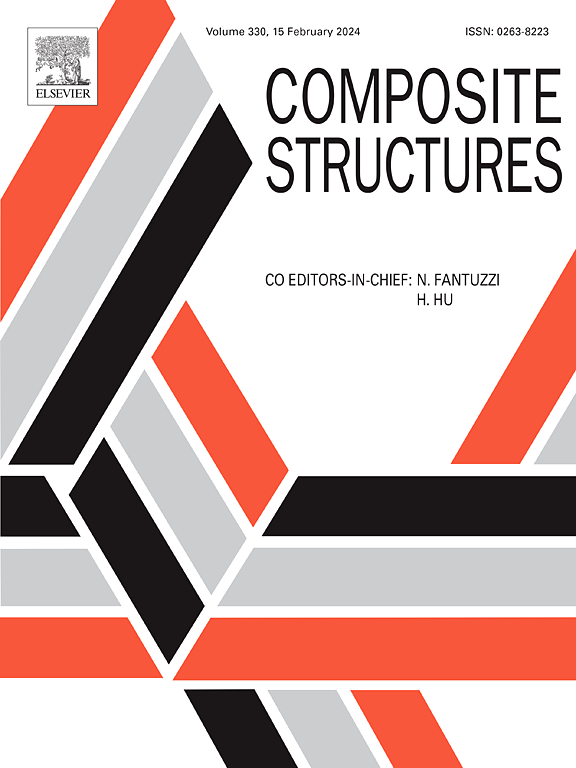An explicit finite element discrete crack analysis of open hole compression failure in composites
IF 6.3
2区 材料科学
Q1 MATERIALS SCIENCE, COMPOSITES
引用次数: 0
Abstract
This paper presents a comparative study of implicit and explicit finite element methods in simulating open hole compression (OHC) failure in composite laminates, employing the Discrete Crack Method (DCM) with the Floating Node Method (FNM) for enhanced accuracy in matrix crack modeling. The finite element models are built upon experimental OHC tests of carbon fiber/epoxy laminates with both ply-level and sub-laminate scaling. The models are validated through a series of simulations studying the effects of hole sizes on ultimate strength and damage modes. The FNM allows for accurate tracking of crack initiation and propagation. Additionally, parametric analysis further evaluates the impact of factors such as damping, mass scaling, and matrix cracks spacing on the simulation outcomes. The explicit method shows significant savings in computational times. The study demonstrates the effectiveness of the FNM within the explicit FEM framework for predicting OHC failure in composite laminates with precision and efficiency.
复合材料开孔压缩破坏的显式有限元离散裂纹分析
本文采用离散裂纹法(DCM)和浮动节点法(FNM)来提高矩阵裂纹建模的精度,对比研究了隐式和显式有限元方法在模拟复合材料层合板的开孔压缩(OHC)破坏中的应用。基于碳纤维/环氧复合材料层合层和次层合层结垢的热含量试验,建立了碳纤维/环氧复合材料的有限元模型。通过一系列模拟研究了孔尺寸对极限强度和损伤模式的影响,验证了模型的有效性。FNM允许精确跟踪裂纹的起始和扩展。此外,参数分析进一步评估了阻尼、质量尺度和矩阵裂纹间距等因素对模拟结果的影响。显式方法显式地节省了计算时间。研究表明,FNM在显式有限元框架内预测复合材料层合板热热破坏的精度和效率是有效的。
本文章由计算机程序翻译,如有差异,请以英文原文为准。
求助全文
约1分钟内获得全文
求助全文
来源期刊

Composite Structures
工程技术-材料科学:复合
CiteScore
12.00
自引率
12.70%
发文量
1246
审稿时长
78 days
期刊介绍:
The past few decades have seen outstanding advances in the use of composite materials in structural applications. There can be little doubt that, within engineering circles, composites have revolutionised traditional design concepts and made possible an unparalleled range of new and exciting possibilities as viable materials for construction. Composite Structures, an International Journal, disseminates knowledge between users, manufacturers, designers and researchers involved in structures or structural components manufactured using composite materials.
The journal publishes papers which contribute to knowledge in the use of composite materials in engineering structures. Papers deal with design, research and development studies, experimental investigations, theoretical analysis and fabrication techniques relevant to the application of composites in load-bearing components for assemblies, ranging from individual components such as plates and shells to complete composite structures.
 求助内容:
求助内容: 应助结果提醒方式:
应助结果提醒方式:


